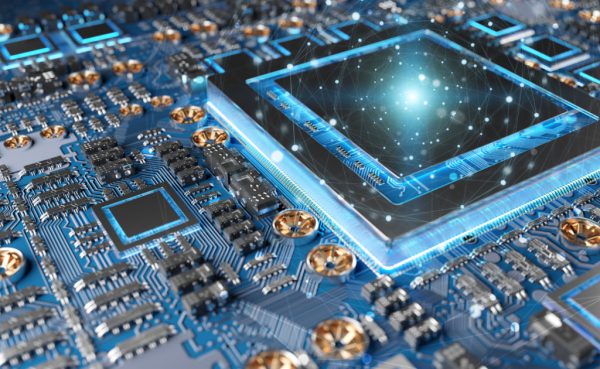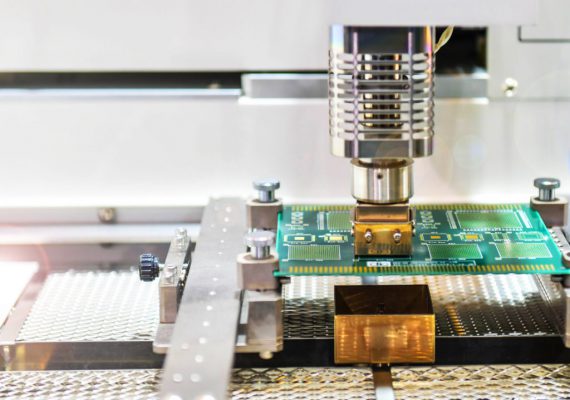
Making your first PCB prototype is no easy task – but it’s incredibly rewarding once you’ve completed the final connection. You don’t have to have a degree in engineering or years of experience working as an electric engineer. All you really need is a clear set of guidelines, a small amount of perseverance and, of course, a good partner.
Today there’s a wealth of online resources and software solutions to help you build your very first circuit board. Not only that, businesses offer partnerships whereby you can collaborate with them and receive exactly what you need to build your circuit board.
If you’re interested in learning how creating the printed circuit board works step-by-step, from the design to choosing a partner, continue reading below.
The Design
Let’s assume that you’re going to start from scratch. Before you even get into the technical aspect of what you need to do to build your own circuit board, you’ll need to design the PCB.
There are eight basic steps to designing a PCB board. These are: creating the schematic and setup of the PCB board, link the schematic to the PCB, define the board and layer stack, decide where the components are going to go, insert drill holes (mounting and vias), route your traces and finally verify your circuit board layout by running a design rule check (DRC).
Follow each of these steps one by one and you’ll be sure to have a strong foundational design for your PCB prototype.
Select Your Components
Once you have the design, it’s time to select which electronic components, such as microchips (integrated circuits), sensors, connectors, displays and anything else you’ll need to make sure that your PCB prototype is functional.
Sourcing parts is simple. Hi5 Electronics innovative online shop that allows you to submit files and customise your order. If you’re intent on completing your own printed circuit board prototyping, we can provide you with the right components or even produce a prototype PCB either single or multi-sided on your behalf.
At this stage, you’d be wise to create a detailed block system diagram. In most cases this will include a master mini controller with various components, including sensors and displays that interacts with a mini controller through different serial ports. A block diagram allows you to decide the type and number of serial ports with ease.

The Schematic
Next, you’ll need to create a diagram (or schematic) of the electronics design. Now, you could hire a freelance design engineer to do this for you or ask someone who’s perhaps a little more learned than yourself but, if you’re determined to go it alone, there are plenty of online resources and design applications to choose from.
The schematic circuit design is needed for each block of your system block diagram. It shows how every component is connected and provides you with clear guidelines when undertaking printed board circuit prototyping.
PCB Product Layout Design
More likely than not you’ll be able to use the same software that you used for your schematic diagram for the PCB layout design. The software should have a set of tools that verify that the layout meets the design specifications for the PCB process and that the PCB is in sync with the schematic.
It’s worth remembering that small products with components close to one another will take longer to layout. Also, products that route a substantial amount of power or have wireless connectivity also require more PCB effort.
Bill of Materials
Following the completion of the PCB layout, a Bill of Materials will be generated. This is usually generated automatically by the schematic design software. The BoM will list the part number, specification and quantity of each part.
If you’re using a cloud-based manufacturing services partner to build your own circuit board, the BoM can be uploaded into their application when your getting a quote for your parts.
Creation of PCB Prototypes
There are two steps to creating PCB prototypes. The first is the production of the circuit board. The circuit design software will create a layout format with a file for each layer of the PCB. These files will then be sent to the manufacturing partner.
Once the board has been created, the electronic components can be soldered onto the board. Your design software will generate an output file that shows the precise coordinates of each component. This is an easy way of automating the soldering.

Testing
Firstly, don’t be surprised that your prototype doesn’t immediately work precisely as you’d expected, when its returned from the manufacturer. It’s not uncommon when you build your own circuit board for the design to go through several iterations before optimal functionality is achieved.
There may well be several bugs that needed to be debugged. Though this can be a mite frustrating, and occasionally time consuming, it’s always best to get to the root of the problem and fix it.
Choose the Right Partner
Our final point is one to remember. Not all partners offer the same standard of service. Some are better than others. You can increase your chances of developing a successful PCB prototype by making sure that any potential partner offers an instant online quote and a reasonable price, sources the parts on your behalf and even offers discounts, provides all the required service to build your PCB board prototype and allows you to track the progress of your production orders.
There you have it. The key process elements of making your first PCB prototype. Interested in learning more? Contact Hi5 Electronics today and see how we can help you.